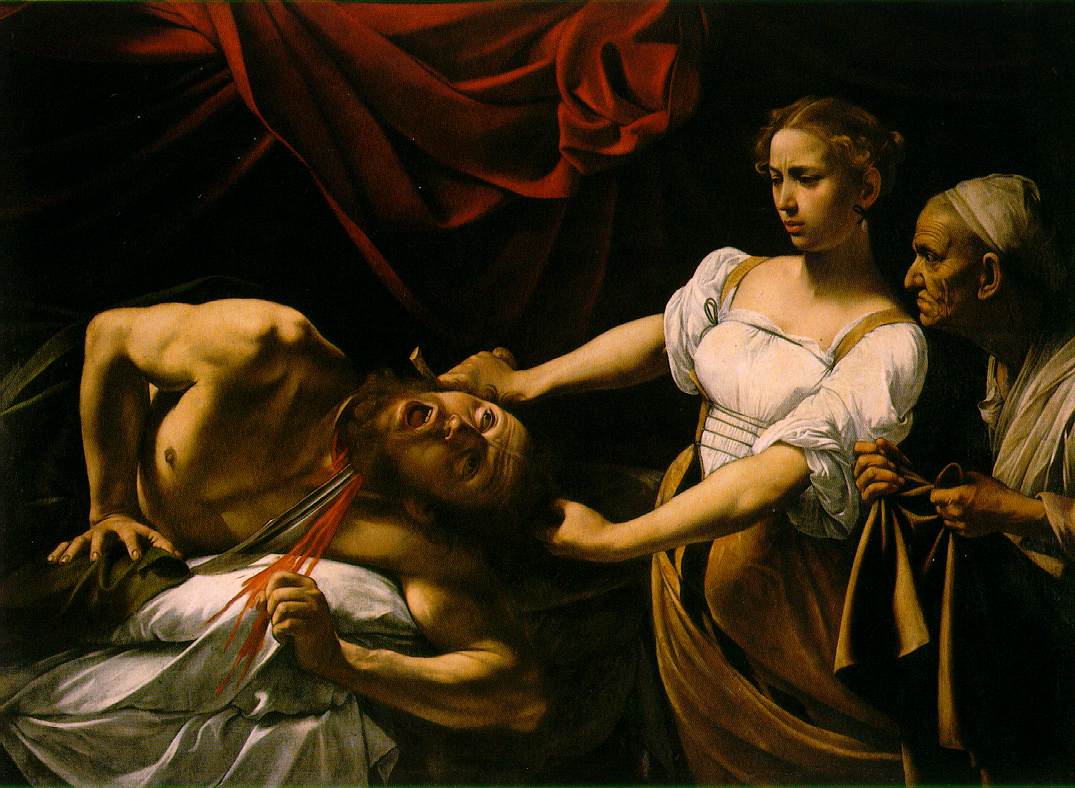Judith is the great apocryphal heroine of ancient Israel. Like an ancient Joan of Arc, she rises up during her nation’s time of need. She employs her guile, like Odysseus, adorning a misleading costume and she dramatically slays Holofernes, the fearsome general of Assyria, before his army destroys the town of Bethulia near Jerusalem.

The Book of Judith is exciting and intense! It frames the narrative perfectly – first the evil conquering empire strikes fear into the hearts of the region, and then the time-frame narrows. An army advances while supplies dwindle in Israel. Just when all hope seems lost, a lone woman (Judith -a widow) devises a scheme to outwit the Assyrians. In doing so, the text reaffirms the Homeric Greek supposition, that letters ultimately conquer arms (hence why Odysseus wins the Trojan War by outwitting the Trojans, rather than Achilles or Hector. Odysseus is also one of the few Achaeans to return home after many years away in Troy). At any rate, Judith credits all of her success to God, though curiously God is totally absent from the text. The chief action springs forth exclusively from Judith, herself.
Judith is the feminine form of Judah, meaning something like “praised.” As with certain other Biblical texts, the events are almost entirely anachronistic (i.e. echoes of the book of Esther). Nevertheless, this should not detract from its beauty, as an ancient hero-tale. The dramatic scene of Holofernes’s beheading has been re-captured numerous times in great works of art.
To recount the story:
The Book of Judith begins with a threat from the Assyrian Empire under King Nebuchadnezzar. He issues a declaration of war to all in the surrounding regions, but none take his threat seriously, so he sends out his fearsome general, Holofernes, who decimates major cities, killing many men, enslaving women and children. This strikes fear into the hearts of smaller communities, like Israel. However, they decide to defend their territory at the small mountain pass of Bethulia, an area north of Jerusalem. When Holofernes hears of their defenses, he asks his council about this strange mountain people. His counselor advises Holofernes against attacking the Israelites because of what their God did to the Egyptians, but the counselor is ridiculed by Holofernes. His punishment is to be bound and abandoned near Bethulia.
In the ensuing battle, the Israelites grow despondent, fearing the Lord has forsaken them. Judith does not appear until Chapter 8. She is a widow because her husband had died of a sunstroke during the barley harvest.
Judith prostrates herself and prays to God, then she adorns herself in beautiful clothing, enough to turn the gaze of any man, and she leaves outside the town gate of Bethulia where she is soon intercepted by a group of advancing Assyrian troops. When questioned, Judith claims she is defecting from Israel because Assyria will soon conquer it, and she wants to provide helpful information to Holofernes about the quickest route to conquer Israel. She is brought before Holofernes who becomes entranced with Judith. At a great meal, Holofernes asks Judith to join him. He drinks considerable wine and collapses in his tent, alone with Judith. Once he is no longer a threat, Judith cuts off Holofernes’s head, and she and her maid escape out the tent as if going to pray, but instead they sneak away bringing the head of Holofernes back to Bethulia. The next morning, the Israelites advance on Assyria, and in confusion without their general, the Assyrians scatter and flee, while Israel plunders their tents.
In the end, Judith is praised as a hero in Jerusalem and Israel celebrates with song and dance -Judith sings a song of thanks and praise to God.
As mentioned above, the book of Judith is apocryphal, and therefore it is not a part of most major Biblical canons, however the Catholics include it in the Bible, while the Protestants and Jews believe it to be non-canonical.
For this reading I used an internet-based Project Gutenberg translation.
